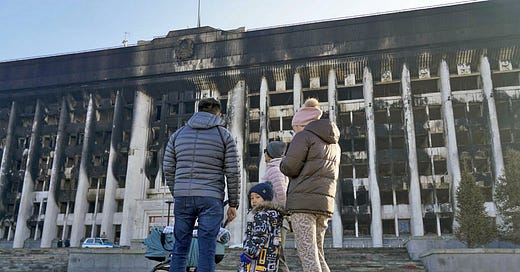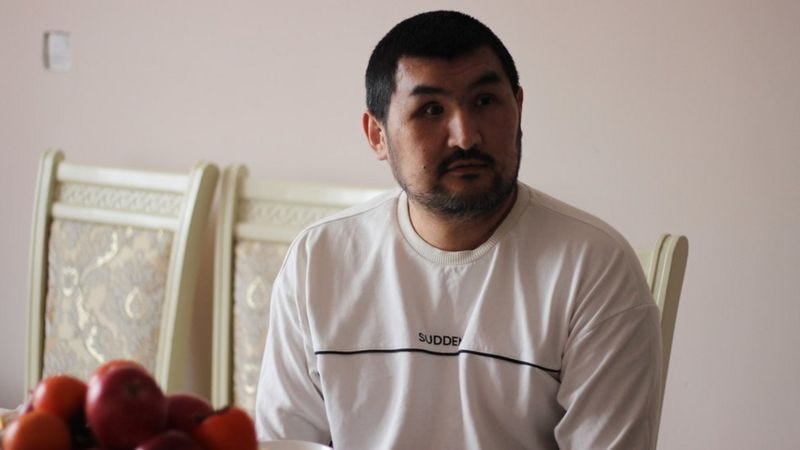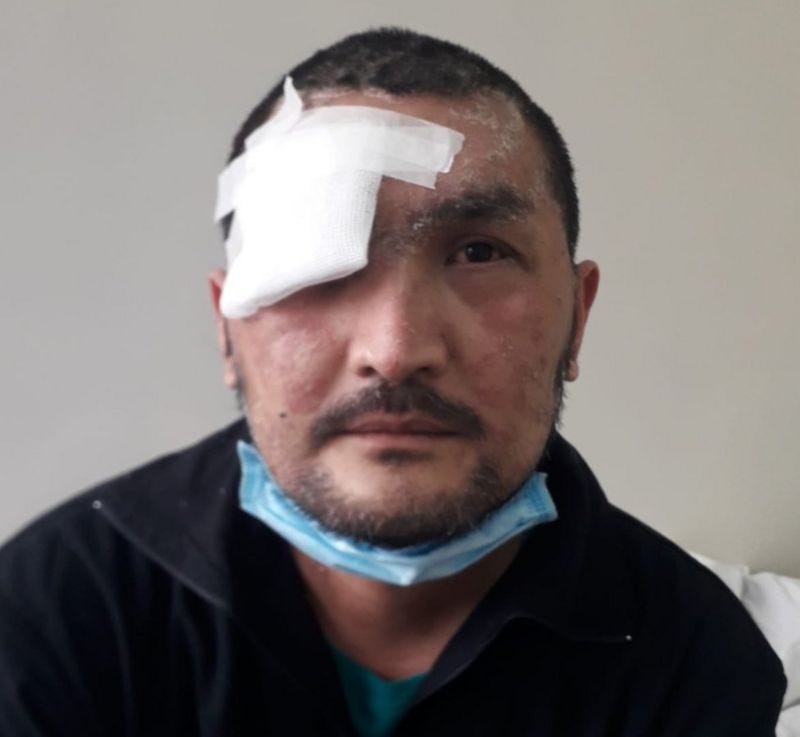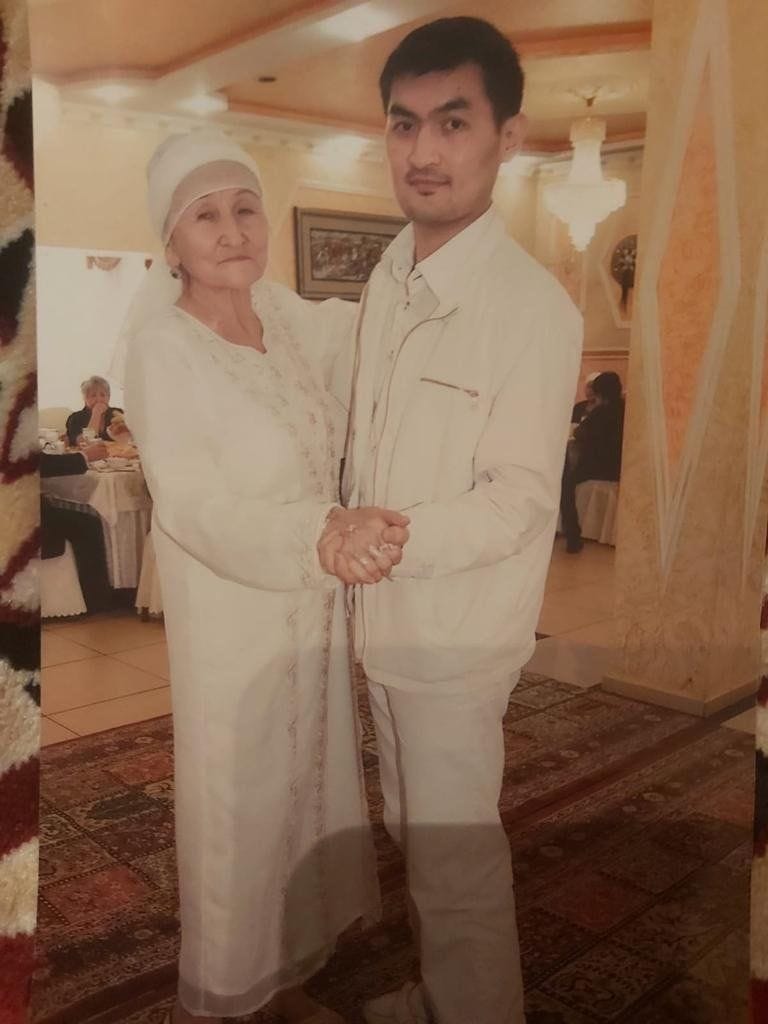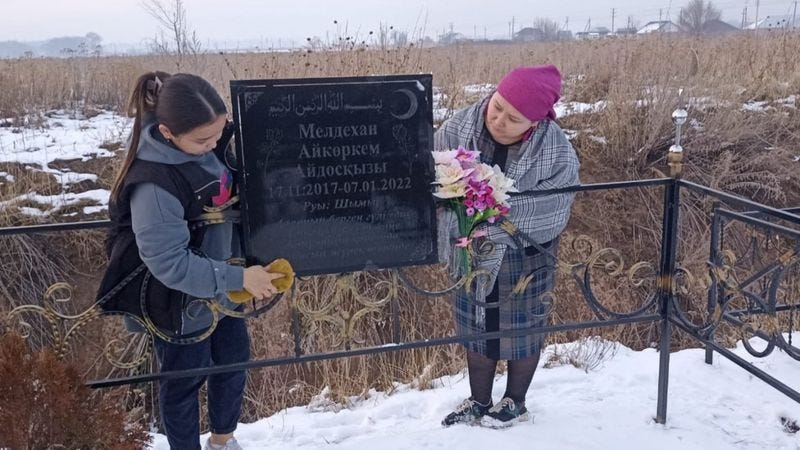The January that changed Kazakhstan: How the country is surviving the aftermath of the largest riots in its history
A year on, there is still no convincing explanation as to how and why the riots unfolded. We spoke to those who survived the January 2022 events in Kazakhstan.
By Nargiza Ryskulova.
The beginning of 2022 went down in modern Kazakh history as “Qandy Qantar” – bloody January. Discontent at rising gas prices quickly spiralled into multiple anti-government protests across the country; peaceful demonstrations spilled over into riots which were brutally suppressed. A year on, there is still no convincing explanation as to how and why these events unfolded, but everyone agrees on one thing: last January changed the country’s political structure significantly, and the lives of many Kazakhs can now be divided into ‘before’ and ‘after.’
On the seventh day after New Year, 2022, the Meldekhan family started running out of supplies. The Almaty protests were almost over, and the television said that order had been restored in the city. However, the internet was still down and the shops were only taking cash.
The four children went out for supplies, the two youngest tagging along with the older two. They had to cover almost half the city, picking up bread in one place and nappies in another. Driving home, they turned towarda the direction of Almaty’s main Republic Square. That’s when the shooting started, directly at the car.
The oldest son, 18-year old Aidar, managed to turn the car around and tried to drive out, but the shooting intensified. They would later count 20 bullet holes in the car. The wounded children managed to escape their vehicle and hitch a ride to the nearest hospital. By the time their father arrived, the older daughter was in intensive care with seven bullet wounds. The youngest daughter, four-year old Aykorkem, was already dead.
When he sent his children out for supplies, Aydos Meldekhan hadn’t known this would be the morning the country’s president, Kassym Zhomart Tokayev, gave the order to shoot to kill, giving no warning.

The violence of the response shocked many in Kazakhstan – during his three years as president, Tokayev had never been a strongman. A former diplomat and foreign minister, he won the 2019 snap election, largely thanks to the backing of his predecessor, Nursultan Nazarbayev, the autocrat who had ruled since Soviet times.
Tokayev was an unexpected leader for Kazakhstan who often acted as Nazarbayev’s puppet, and analysts compared their relationship to that of the Russian leaders Vladimir Putin and Dmitry Medvedev. After leaving his presidential post, Nazarbayev remained head of the Security Council and leader of the ruling party. He also kept his political inviolability and the title ‘Elbasy’ – father of the nation. One of Tokayev’s first moves as president was to rename Kazakhstan’s capital, Astana, as ‘Nursultan.’
During the first five days of the protests, the authorities changed their rhetoric. Indifference and willingness to make partial concessions towards lowering fuel prices turned into a talk of an ‘attempted coup,’ and forceful suppression of the protests, aggressive in some cities.
“Other countries are calling for the two sides to hold peace talks. Such foolishness. How could we have peace talks with these criminals and terrorists?” Tokayev said.
“The government will not fall!”.
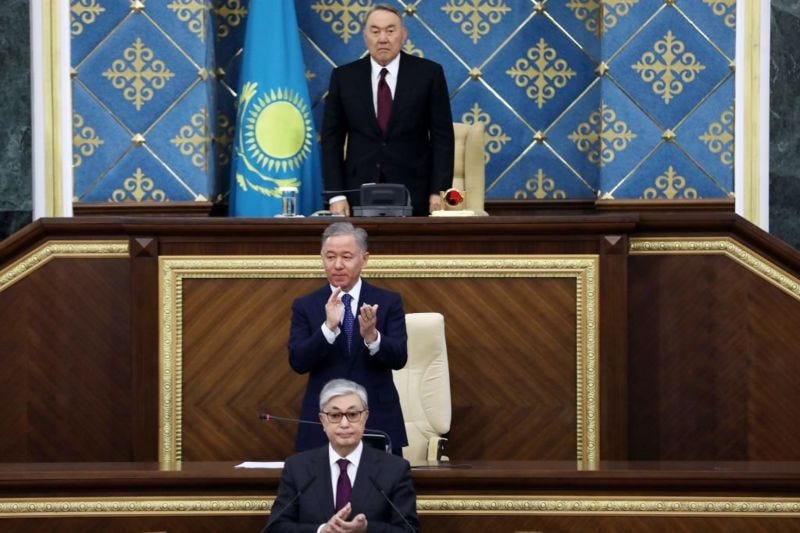
But last January, Tokayev showed unprecedented independence – he dismissed the government, accusing it of allowing the riots, and arrested the head of the National Security Committee and several more of Nazarbayev’s allies. Tokayev appealed for help of the Collective Security Treaty Organisation (CSTO), the Moscow-led military alliance. CSTO sent around 3,600 troops, primarily from Russia.
By January 13, over 10,000 people were detained across the country. Official data show that 238 people were killed in clashes between police and protestors, including 19 security personnel. Various sources estimate that between several hundred and several thousand people were wounded.
“The government’s law-enforcement bodies didn’t have a unified algorithm or a plan of action for the given situation,” admitted Tokayev in a later interview.
“It was a mess; I have to be frank about that. The heads of law enforcement were afraid to take on responsibility. That’s to say, it was a real war, I had to take on the responsibility myself.”
Aykorkem became the youngest victim of Bloody January, which claimed the lives of women, pensioners and children, in the square by chance, as well as protesters and security officials. The public prosecutor said an ‘accidental fire’ killed 20 people. But human rights activists believe the toll is much higher – most likely, some victims were buried by their relatives, who did not report their deaths.
‘They brought death’
Aykorkem was her father’s favourite child. Aydos was 40 when she was born. She would lit up a room when she entered, he said. The screensaver on Aydos’s phone is his daughter’ last photo, taken on January 2, five days before her death. The girl poses in a stylish dress –she loved dancing and being photographed, family said.
The Meldekhan family, like many other Kazakhs, were preparing traditional ‘Russian’ salad and beshbarmak noodles, typical New Year’s meal. Meanwhile, 3,000 kilometres west of Almaty, people were gathering in the streets, demanding liquified gas prices to be cut, after double increase on January 1. The protests erupted in Zhanaozen, a hotbed of mass protests by oil workers in 2011, brutally suppressed by the military, with 17 killed and hundreds wounded.
Just two days after the first protest in 2022, the unrest spread across the country, in at least 16 towns.
Protesters’ demands were not only lowering of fuel prices anymore. They wanted social and economic justice, political reform, and rise of salaries and pensions. But the only unanimous demand was a definite end to Nursultan Nazabayev’s regime.
The most popular slogan among protesters was “Get out, old man!” capturing the mood of the Kazakhs, tired of corruption, lawlessness and poverty. Kazakhstan is the biggest and most resource-rich state in Central Asia, yet according to an audit by KPMG, half the country’s wealth is held by only 162 people.
Bursting out of the confines of western Kazakhstan, the protests turned violent. Clashes with the police in Almaty began, and late on January 5, protesters started burning cars and the crowd stormed the city hall– the president’s former residence – and several other buildings.
The authorities declared a state of emergency, cutting off mobile and network internet and phone signal. On January 6, Moscow-led CSTO troops rolled into Kazakhstan.
It is still unclear why the riots spread so quickly band initially peaceful protests became violent. Some claim that security forces loyal to Nazarbayev were behind the movement; others that Tokayev was trying to remove his predecessor for good. There are also claims of foreign interference aimed at forcing a regime change in Kazakhstan, but also a theory that organised criminals took advantage of the riots.
But everyone agrees that the demonstrators were a mix of ordinary Kazakhs, and those armed with knives, sticks and hunting rifles who raided shops, stormed administrative buildings, setting them on fire. Or, as many called them - ‘the provocateurs.’
Aydos says that up until his daughter’s death, he hadn’t realised the scale and consequences of the evemts. On January 4, he even went to a police station to offer his help as a vigilante, but was thanked and let go.
“We have had minor protests in the country before, and until then, they were always sorted out quickly. I trusted the authorities totally, and when I first saw the military and police on TV on January 4, I was relieved they hadn’t left the city unguarded,” says Aydos.

“I didn’t know they had brought death with them.”
A year after his daughter’s death, Aydos has told this story dozens of times, always with a lump in his throat. The Meldekhan family is still trying to find out who shot their children.
Tokayev visited the hospital where Aykorkem died and many injured were treated. Aydos managed to get to him and ask “What were my children guilty of? Why were they shot?”
Tokayev told his assistant to write Aydos’s contact numbers, but the family never heard from him again.
Since then, Aydos not only wrote to Tokayev but travelled to the capital Astana to meet someone from president’s administration. And many relatives of those killed or arrested in January 2022 did the same.
Hard to prove the innocence of the dead
Human rights activist Bakhytzhan Toregozhina spent the holidays with her elderly mother when she started getting calls about the shootings from other activists. Internet was already down.
“I didn’t believe it at first, thinking that people were scared and confused as our security forces generally use rubber bullets and stun grenades,” she recalls.
“But soon we found out for certain, they were killing people in Taldykorgan, Shymkent and Kyzylorda.”
The Kazakh authorities went on looking for alleged perpetrators, both among protestors and high-ranking officials. More than a thousand criminal cases have been opened against protestors, data presented in April showed.
Former head of the Security Council and ally of Nazarbayev, Karim Masimov, was indicted with the most serious charge, high treason. Two of his deputies were also detained on charges of attempting to seize power. The trial against the three has been held behind closed doors, while all material presented is deemed classified. Three members of the Council were found dead in January and media ruled them as suicides.
The cases were opened for those killed in riots – some for their murder, the others, blaming the victims for having organised or taken part in the protests. Toregozhina said almost all cases on murder charges were terminated.
Cases in which victims were shot and an exit wound could be found on the body, for which “is almost impossible to tell who fired the bullet”, were terminated.
The others, for the victims with a bullet present inside the body, were ongoing as “it might be possible to identify the weapon and its owner”, she said.
“But if a military or police officer fired the gun, the case gets a ‘top secret’ stamp.”
Toregozhina believes authorities would prefer the cases stay out of courts, to avoid possible verdicts for militaries. Many cases initially carrying a murder charge were later processed for ‘abuse of authority’, with lighter penalty.
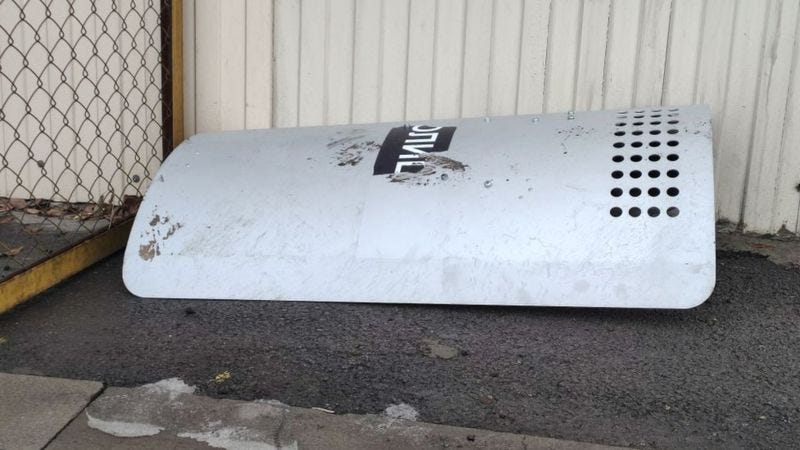
She estimates the regime offers unspoken deal - no punishment for those who shot at protesters, and in return, it will not be overzealous prosecuting demonstrators. In a year, only one murder case has come to trial.
“Many relatives of the victims ended up colluding with the police, tearing up their statements,” says Toregozhina.
“None of them wanted their dead son, brother or uncle to be branded as terrorists. It is like the old Soviet charge of high treason, where it became difficult to live with a certain surname. It’s hard to prove the innocence of the dead.”
The January 2022 protests were the largest and bloodiest in the history of modern Kazakhstan. Toregozhina and her colleagues tried to compile a list of the dead, wounded and detained. Later, they launched a campaign “Qantar 2022”, with data on victims regularly updated.
“We were shocked by what happened, though we knew we were living in an authoritarian state,” says Toregozhina.
“It was like going back to the times when Soviet authorities suppressed one of the first mass protests against the Soviet Union, in Almaty 1986, or to 2011 when Nazarbayev cracked down on the oil workers in Zhanaozen.”
She estimates that January 2022 events came as a “result of a lack of resolution of previous protests.”
“This is what happens when the authorities remain unpunished, you get into a vicious circle of lawlessness.”
Out of hospital, and into interrogation
Yermek Abdreshev, 37-year old mechanic, left home on January 5. Two days later, he woke from a coma in a hospital bed, a shrapnel wound where his eye once was.
He was arrested straight from his hospital bed. He was led through the streets in his dressing gown and slippers at a gunpoint.
“They didn’t bind my hands, but I felt the gun barrel at the nape of my neck. The nurse told them I couldn’t see, but they wouldn’t believe me until I almost fell down the stairs. The police grabbed me by the arms and stopped me from falling,” Yermek recalls.
Yermek was put in a prison truck, occasionally stopping to load more people in. He lost his slippers and was taken barefooted in a building, lined up against a wall with others.
“One of the prisoners gave me a raincoat, as I was in a thin hospital gown. The guard saw and poured icy water all over me,” he said.
“They tortured us during the interrogation, and again in the cell.”
Yermek was released on parole on the eleventh day – and only because he was going blind, he believes.
“I was a nuisance for them in the cell, I needed an escort at all times. I couldn’t even go to the toilet unaccompanied, I would stumble and fall.”
Yermek remembers he was injured a few hours after finding himself in a crowd of protestors. Among peaceful demonstrators, he spotted the so-called ‘provocateurs’ – people in military uniforms smashing traffic lights and damaging buildings. With other protestors, he tried to drive them away, but the authorities charged him for taking part in the riots.
While interrogated, he was repeatedly asked how many people he had killed and what damage he had caused. He was accused of being a ringleader because of his injury.
The charges against Yermek were dropped seven months ago, over lack of evidence. The case of him being tortured is still open – but it is going nowhere. Kazakh authorities recognised the use of “illegal methods of interrogation” resulting in six deaths.
In March, the public prosecutor said his office was investigating over 200 complaints. In November, human rights commissioner Elvira Azimova said that more than 80 percent of cases involving torture were closed. A Human Rights Watch report noted that nobody has been charged over the deaths of detainees.
A year on, Yermek hardly ever leaves the house, awaiting another surgery. He can move around his home, but is still not used to losing sight. Events from last January “plunged him into darkness,” he says.
When Yermek returned home after the arrest, his parents could not recognise him. With tears in her eyes, his mother shows photographs of Yermek before and after the interrogation. The family is yet to receive compensation from the government, and Yermek says he gets only a disability allowance. Money for further treatments was collected for him by wellwishers.
“At first I was in shock, I cried all the time,” his mother sighs. “He was a handsome, handsome man, and he loved to wear white clothes, they suited him so. And now…”
“Now I can’t wear white without spilling everything,” Yermek grins.
A new Kazakhstan?
Almaty artist Saule Suleimanova showed her vision of January events on a ‘Sky over Almaty,’ a 60-square metre canvas woven from black and red plastic bags.
She calls it the foreshadowing of Bloody January, and its aftermath.
Many people cry when they look at ‘Sky over Almaty,’ she says. Others are angry, wondering why she reminds them of the events.

But almost nobody is indifferent.
“Bloody January is a collective trauma, nobody wants to talk about it,” Saule estimates.
“The ‘Kantarovtsy’ [literal translation – Januaryites, BBC] were ordinary people who happened to be out on the square those days – not necessarily demonstrators, journalists, or activists. It could have been any of us.”
She thinks the past year has changed the views of their country for many.
"People have finally seen the power of society, you can express your discontent. Yes, it’s risky, and yes, you can pay with your life – but it’s possible," says Saule.
“People began to speak more freely. I don’t think those victims died in vain.”

And there has been some change, albeit on surface. Many Nazarbayev statues were destroyed during the riots and not recovered since.. ‘Elbasy’ himself lost most of his privileges and public roles – in his first speech after the riots, he called himself a simple pensioner ‘enjoying a well-deserved rest.’ Kazakhstan’s capital regained its old name, Astana.
Kassym Zhomart Tokayev disowned his old boss and launched promised political reforms with some constitutional changes. Among more than two dozen amendments is a limit of only one presidential term, but lasting longer - seven years.
In November, Tokayev held a snap election and won easily, just ten months after giving the order to shoot to kill.
"Tokayev claims he is building a new Kazakhstan, but the elections were held in the style of the old one. He had no real opposition, only rubber-stamp candidates, and people had no real choice," says Joanna Lillis, a British journalist who wrote a book ‘Dark Shadows: Inside the Secret World of Kazakhstan’.
The next test for the ‘new Kazakhstan’ will be parliamentary elections, due to be held by June. For the first time since 2013, a new party was registered in November 2022. But Lillis estimates it does not look like a real alternative to the regime.
"Until we see a real opposition really criticising Tokayev and demanding the authorities take responsibility for their actions, [...] all this will be similar to Nazarbayev’s previous policies, even if it is a bit less repressive," says Lillis.
"So far, the signals are not encouraging."
The Meldekhan family was one of the few to receive compensation – around 20,000 dollars and a three-room apartment in a new district of Almaty.
Aydos thinks of this as a sweetener to stop him from talking to journalists. But he insists he will not remain silent as his priority is to find out who has killed his daughter. An investigation showed the bullet holes in the car came from military weapons, but the case was then deemed as classified. Neither Aydos nor his lawyer were given access to the details.

Six months after Aykorkem’s death, an unknown artist painted a mural with her image in one of Almaty squares. It is a black and white version of her photo in Kazakh national dress. A line from a poem written by her father was painted beside it: “Whose uncle shot me?”
Aydos and his wife were touched by the tribute and decided to track down the artists. But soon they found the mural painted over by municipal workers.
A spokesperson from the power company said it had to be repainted as it illegally covered a warning sign on a transformer substation.
Read this story in Russian here.
Translated by Pippa Crawford.

